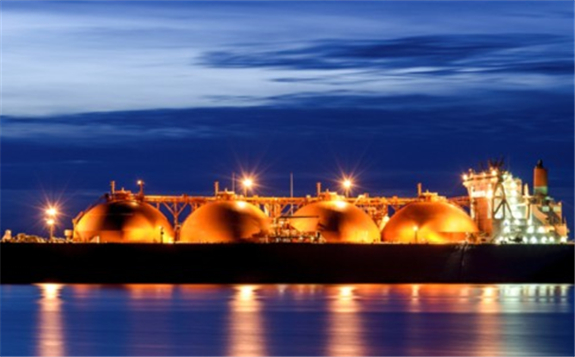After years of impressive growth figures, the global gas market has been hit by a perfect storm. Two consecutive mild winters in the northern hemisphere, relatively full storages, and the outbreak of the novel Coronavirus are depressing demand and prices. China's insatiable appetite, however, is a bright spot for energy producers as the country is snapping up cheap cargoes.

The early outbreak of the novel Coronavirus and China's economic recovery have increased energy imports. The ultralow prices are an opportunity to expand the Asian country’s strategic oil reserves. Furthermore, demand for natural gas has also been strong despite the temporary revival of China’s domestic coal industry to fuel economic recovery. LNG producers especially have high hopes for Beijing’s ability and willingness to absorb some of the excess energy floating on the world’s oceans.
Pipeline vs. LNG
China’s geography favors the sourcing of natural gas by multiple routes. The proximity of resource-rich countries such as in the Central Asian region has led to the development of extensive pipeline infrastructure. These assets have the advantage of being relatively cheap for each unit of energy transported. However, the fixed nature of pipelines means producers and consumers are bound to each other for the lifetime of the infrastructure. Therefore, inflexible long-term contracts are the norm.
LNG imports, contrarily, enjoy high flexibility where spot contracts are more common. However, the higher prices compared to piped gas means buyers usually regard LNG as a second choice in a highly developed market such as China’s. Unusual times, however, lead to unusual outcomes.
The unprecedented downturn on the global LNG market has depressed prices significantly. Central Asian producers, on the contrary, are landlocked and are therefore relatively isolated from large price swings. Beijing, furthermore, issued a force majeure declaration and lowered imports from Central Asia even though buyers have contractual obligations. Instead, some of the gas has been substituted by LNG due to the favorable price difference. Suppliers have used aggressive tactics to get their product in the right place which is abetted by ultra-low prices and the flexible nature of LNG trucks.
Buyers moment
Depressed energy prices are devastating for energy producers. The current market, however, is a rare moment for buyers to take advantage of the favorable situation. Although it is harder and more expensive to store large quantities of LNG over an extended period compared to oil, Chinese buyers are stocking up cargoes.
Before the global pandemic, it was expected that China would take Japan’s spot as the world’s largest LNG importer by around 2025. Japan’s continued economic slump and China’s economic revival have accelerated that forecast to 2022. According to Carlos Torres Diaz, Rystad’s Head of Gas and Power Markets Research, “with China expanding its regasification capacity this year and the accelerated recovery there is a risk a of higher imports from this year.”
Politics and economics
The global oil and gas market is not solely dominated by economic factors. While supply and demand set the right price, geopolitics strongly influences who benefits most from sales or favorable prices. After decades of breakneck economic growth, China has become the world’s biggest importer of oil and natural gas. This gives the country tremendous power on the international stage.
Although a new cold war is brewing between the U.S. and China, the import of American LNG has increased steadily since the lifting of coronavirus measures in March. Traditionally, Qatar and Australia have been the biggest sources for LNG to mainland China. Canberra's political problems with Beijing could be the cause of the slipping market share in May.
At the same time, other exporters have set their sights on the lucrative Chinese market. Moscow especially has high hopes for its LNG sector with President Putin of Russia declaring that his country can and will become the world’s largest producer.
Russia’s Novatek has set a new record with its decision for its ice-proof LNG carrier to set sail for China from the Arctic town of Sabetta. Usually, ships only travel to Asia during the summer period, but this year’s first cargo is two months ahead of schedule. Global warming and modern icebreakers are opening sea-lanes that are covered with ice. To continue this trend, Russia’s Rosatom and Zvezda shipyard have signed a contract for the world’s largest nuclear icebreaker which will be commissioned in 2027. The new ships will unlock the eastern route to China in the Arctic throughout the year.
There is enough natural gas in the world for 52 years based on the current consumption level and excluding unproven reserves. This means that most producers are facing a race against the clock to extract and sell as much as possible before fossil fuels are phased out permanently. Therefore, expect the influence of Chinese buyers to increase as the country will maintain its position as the world’s most important buyer for the foreseeable future.